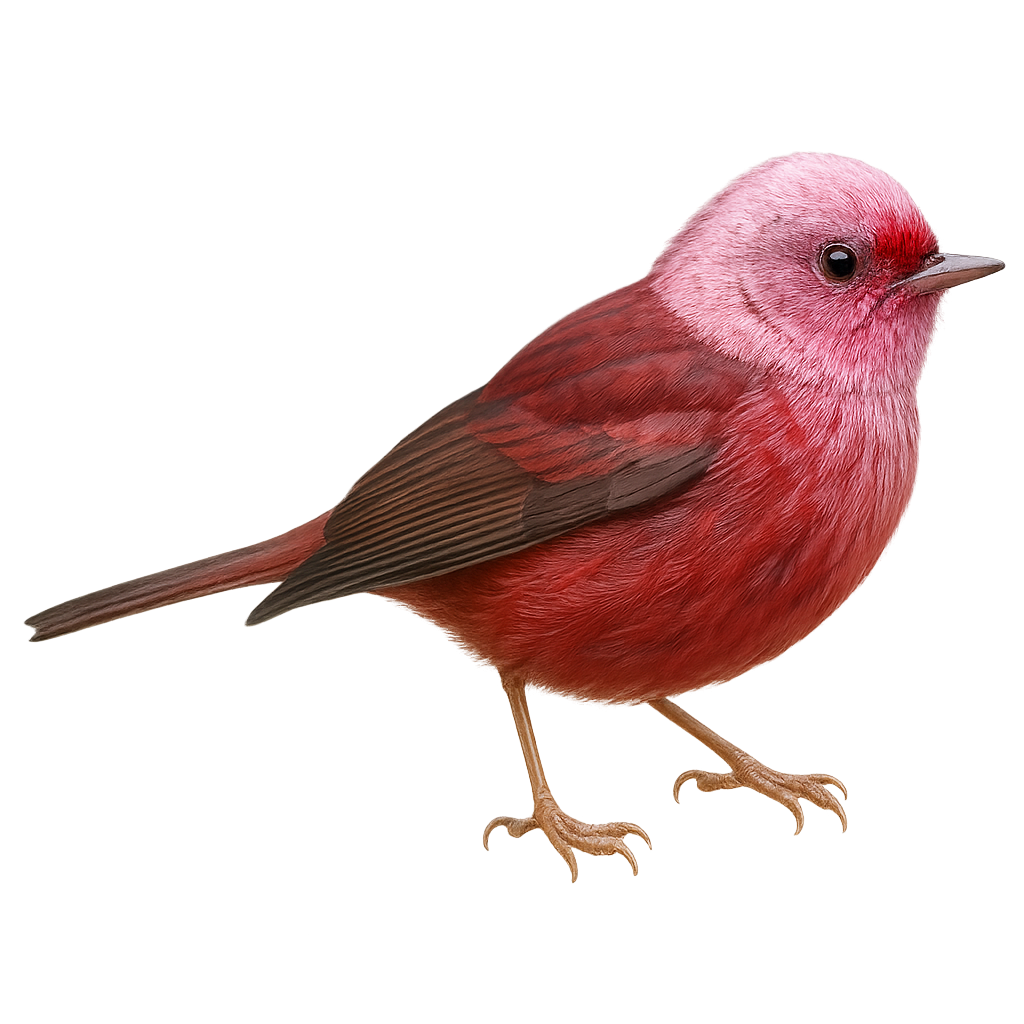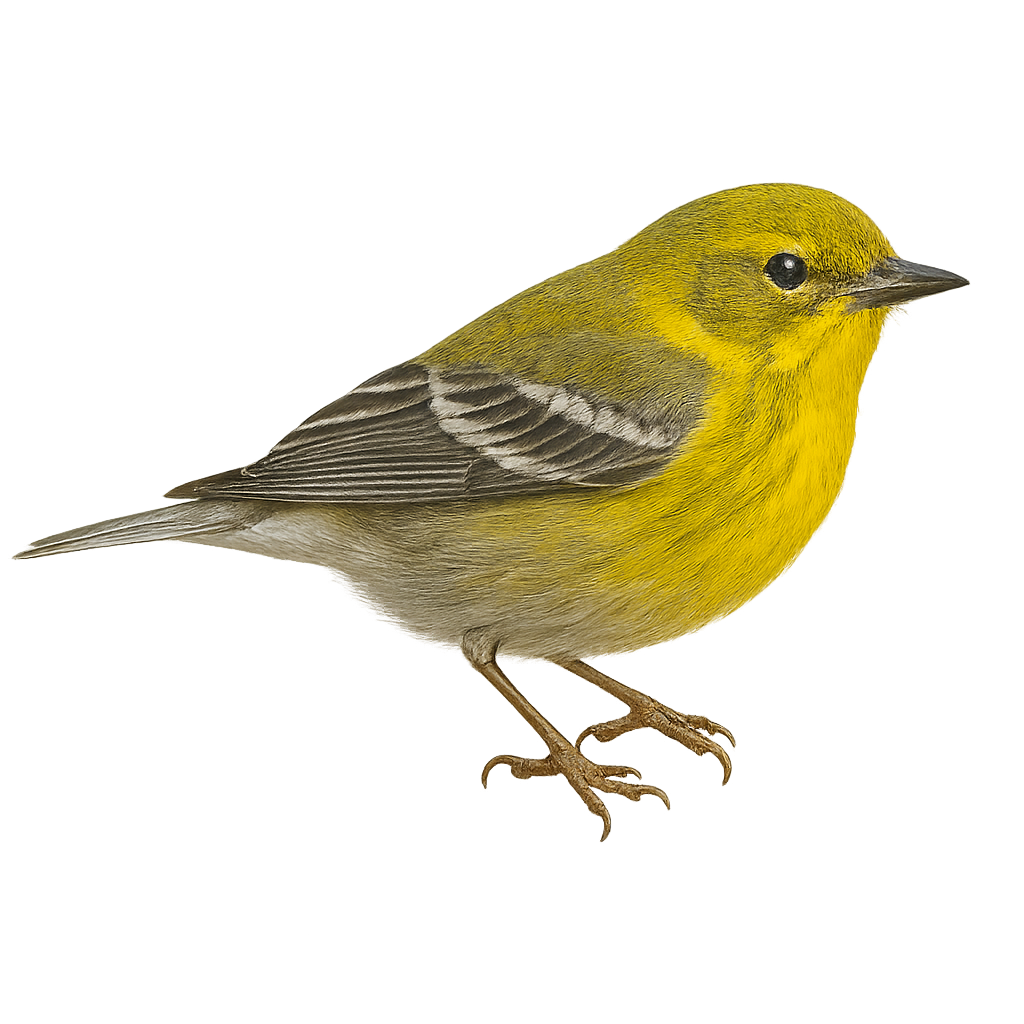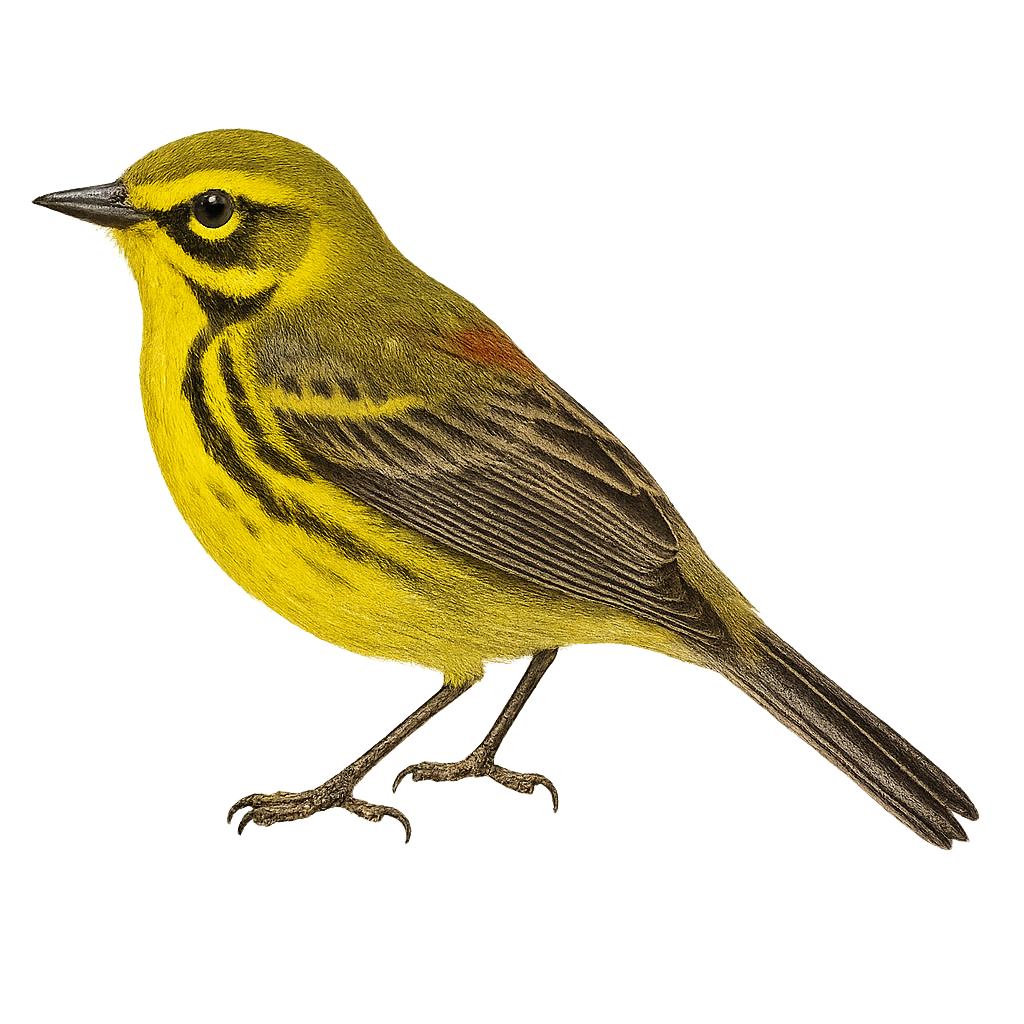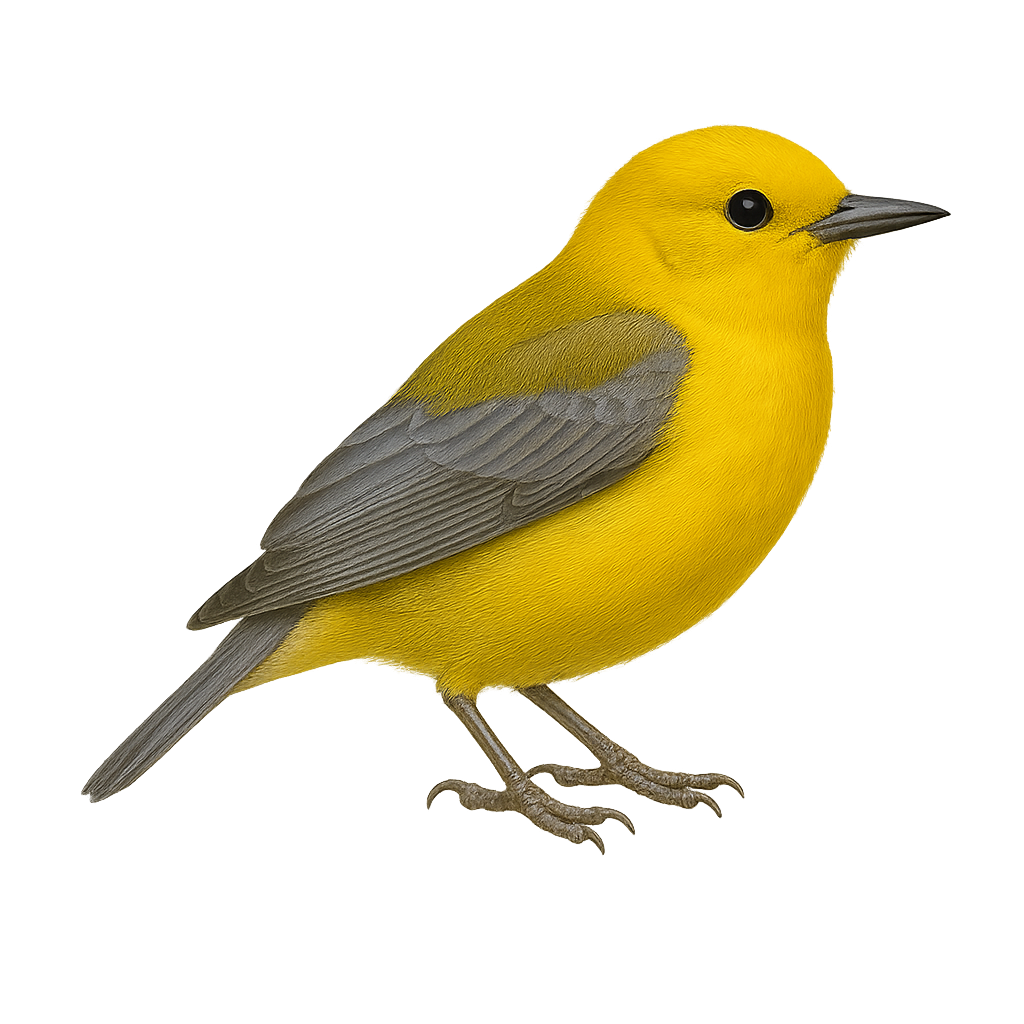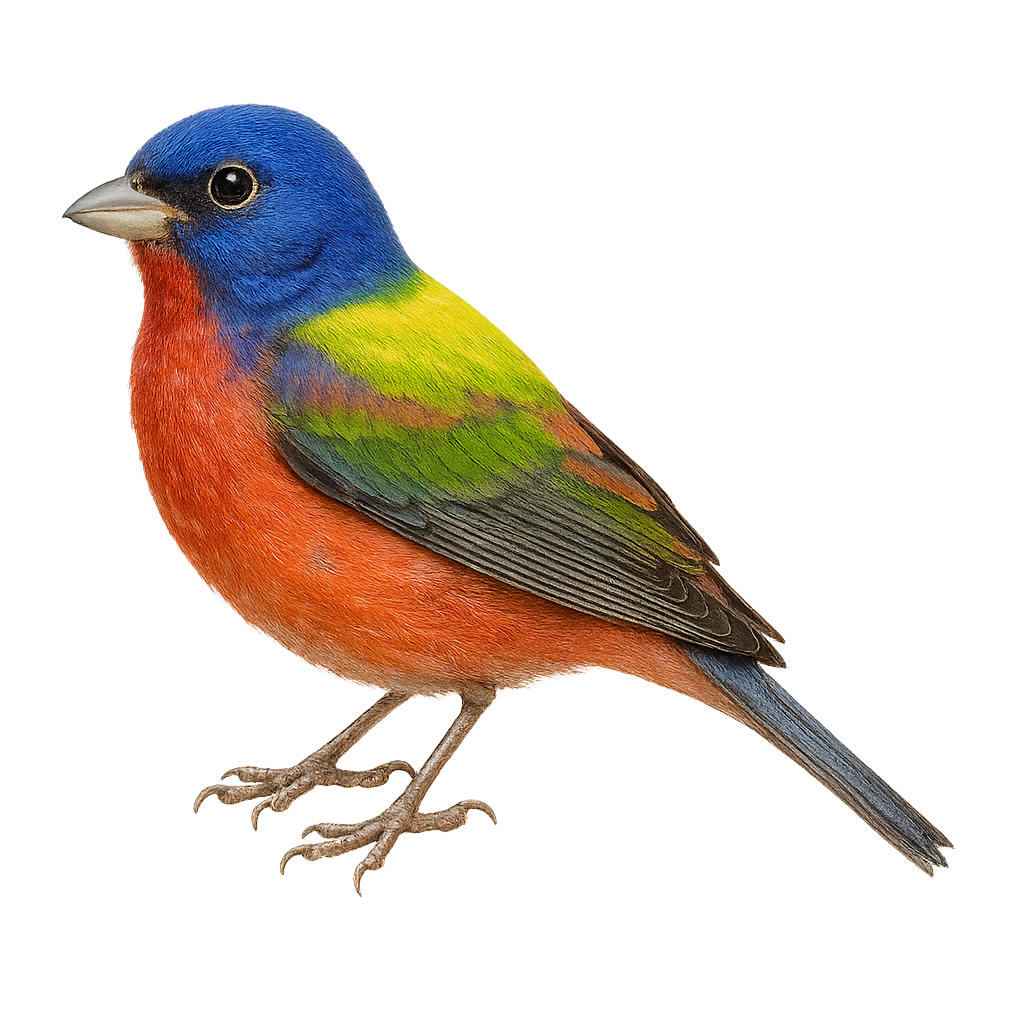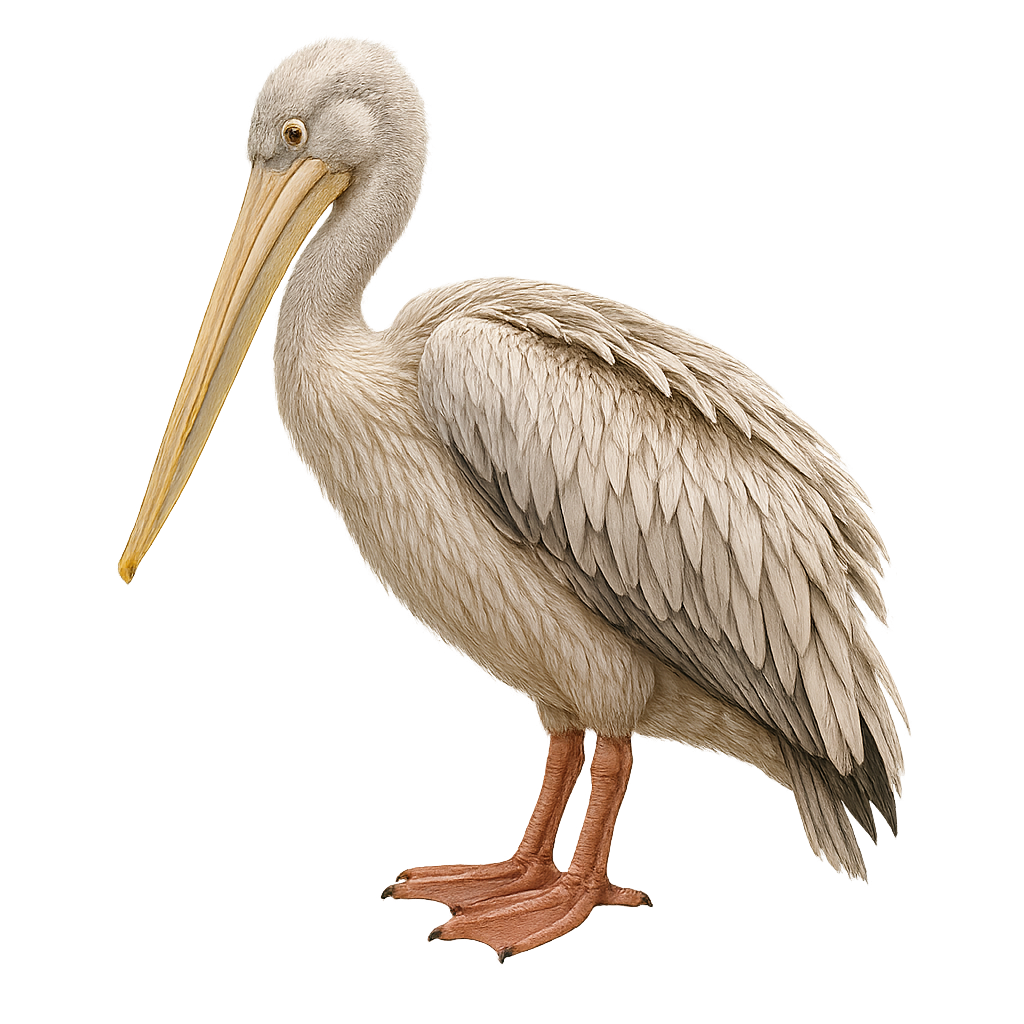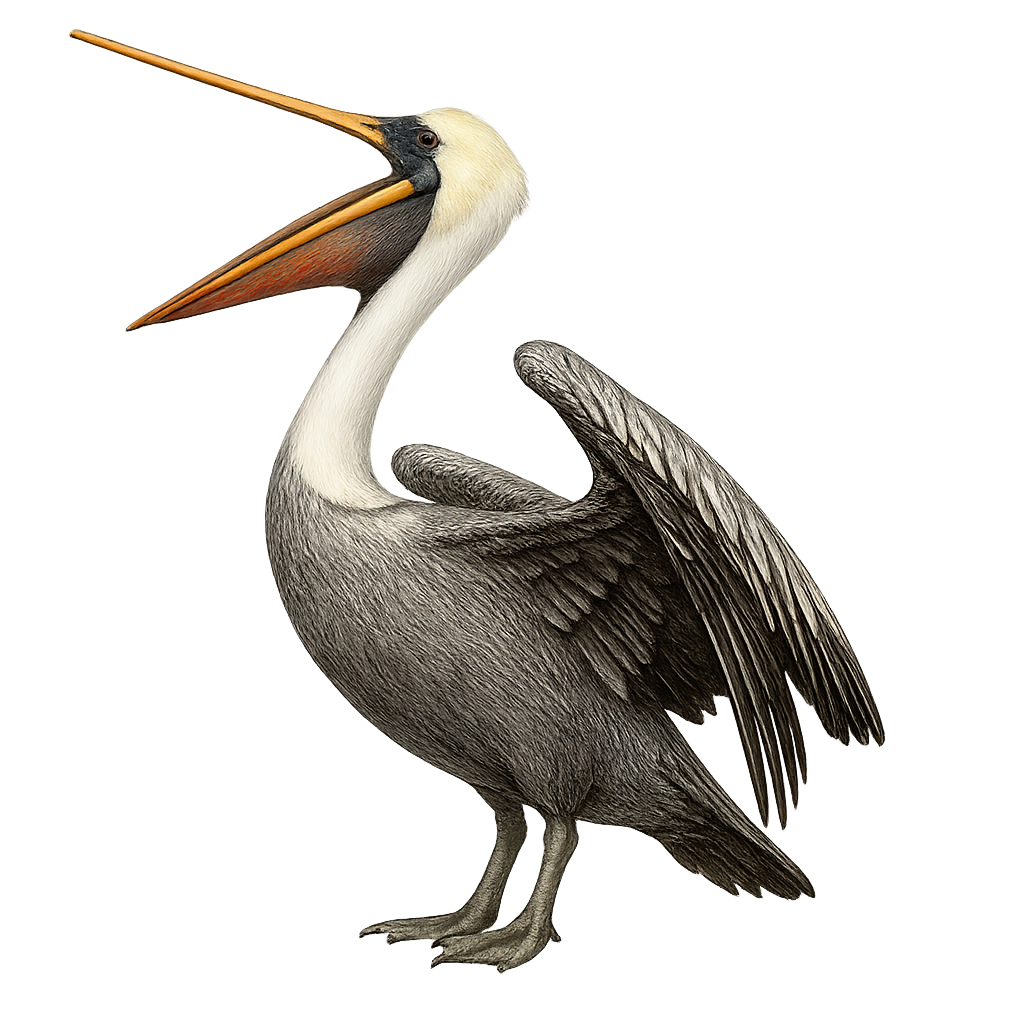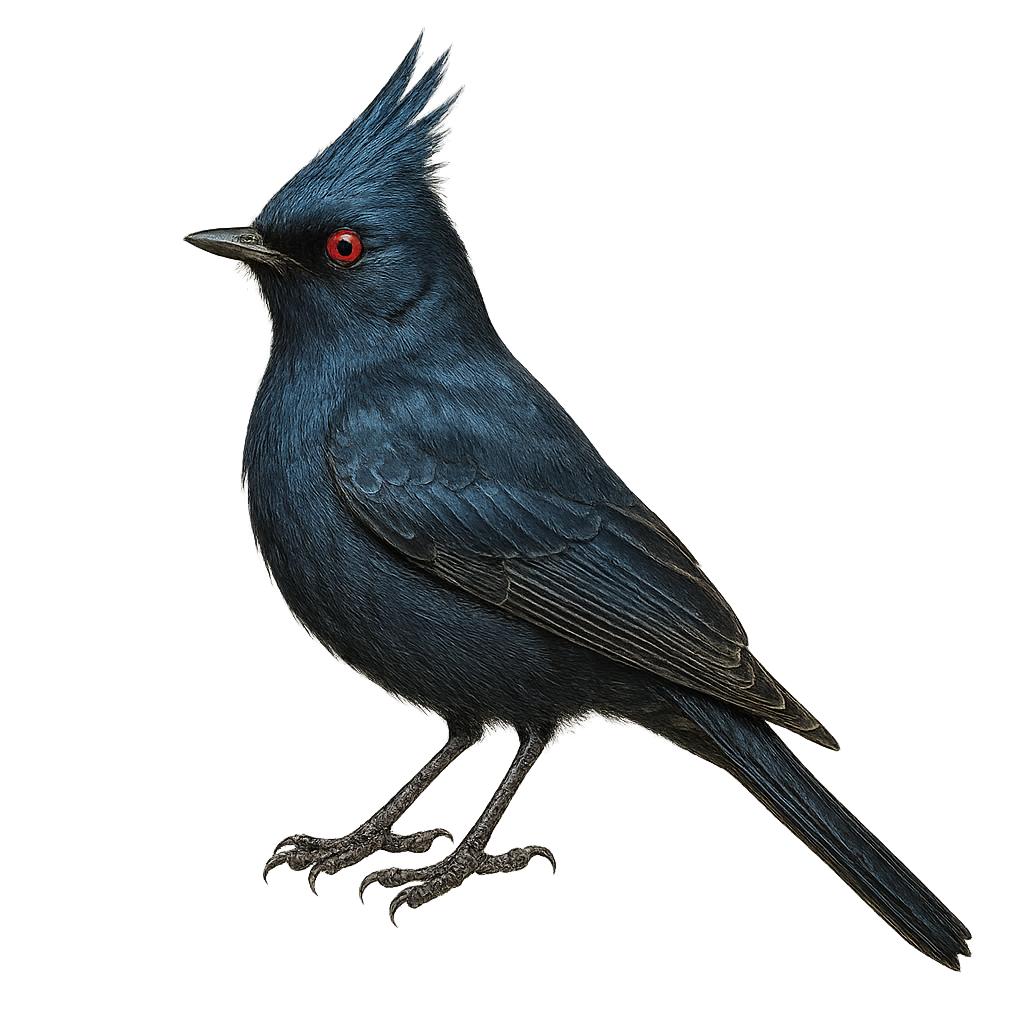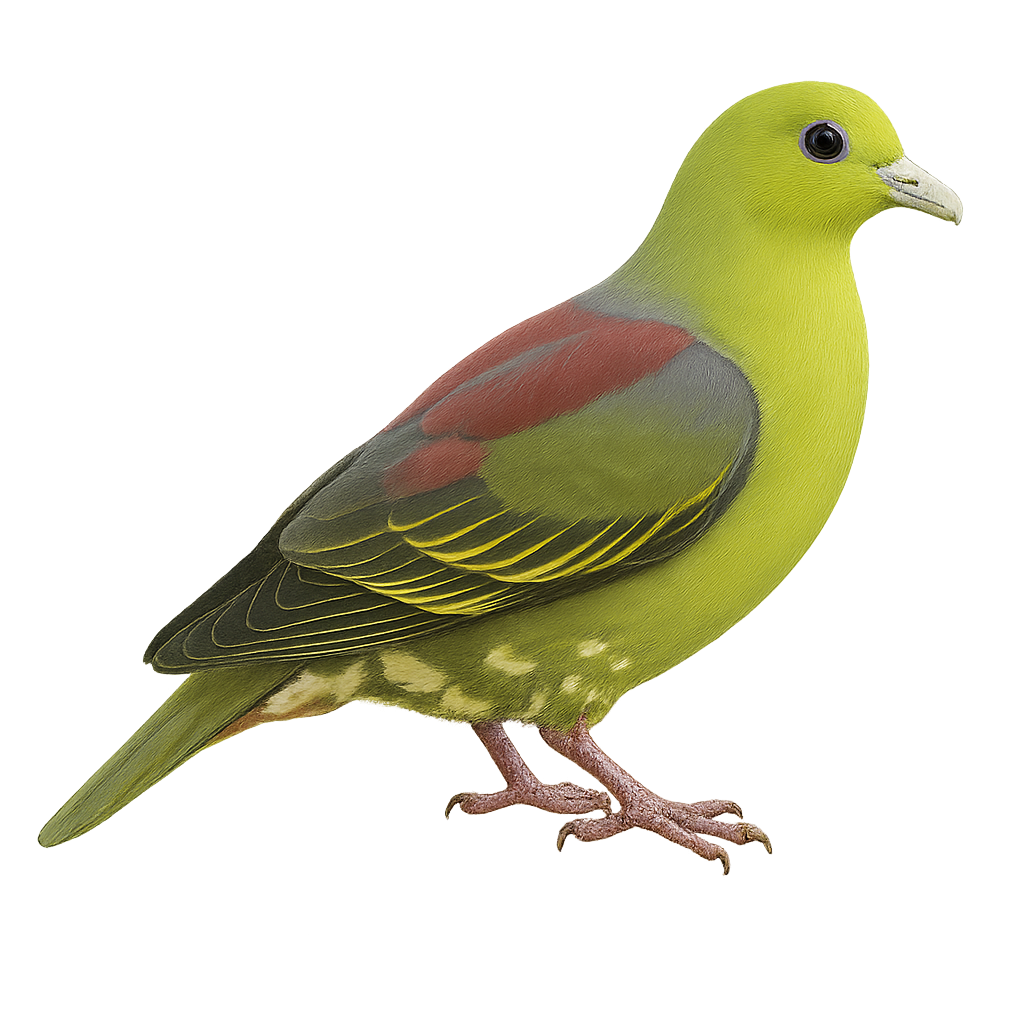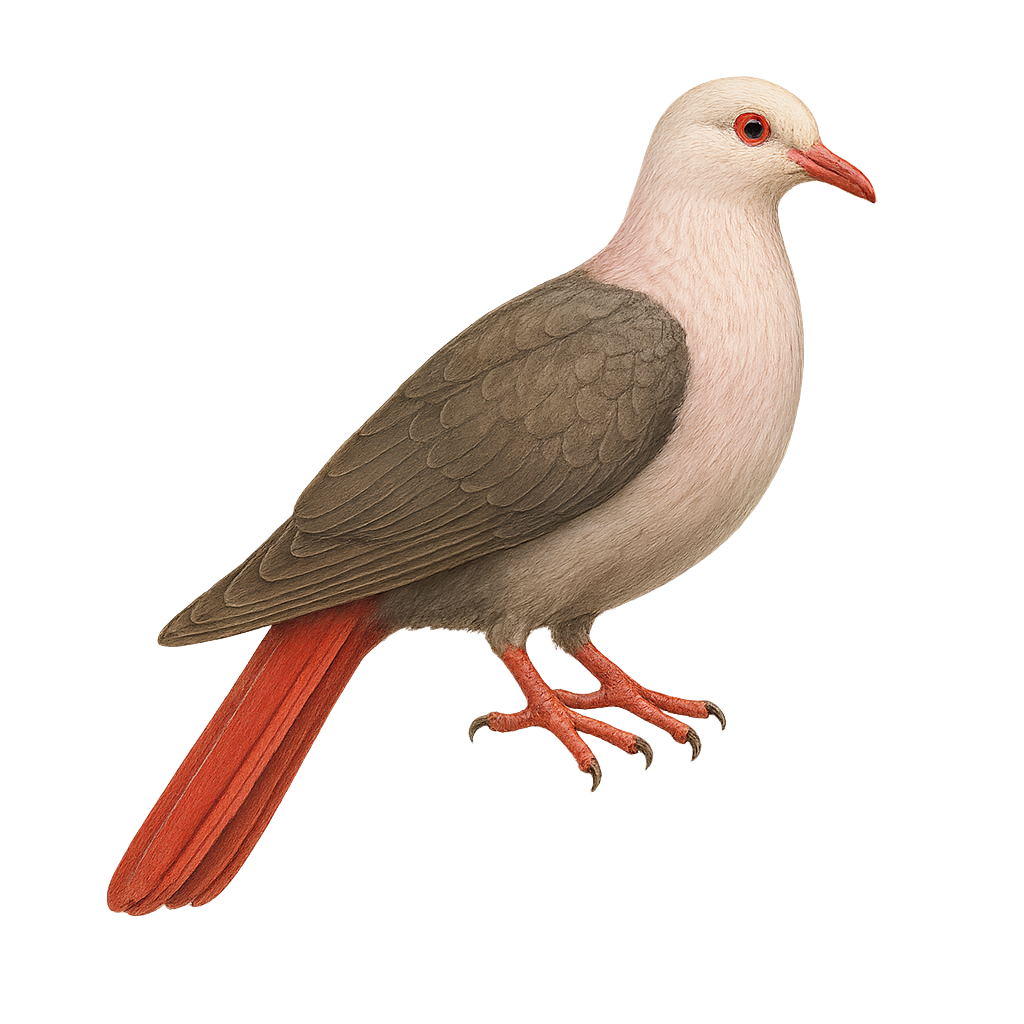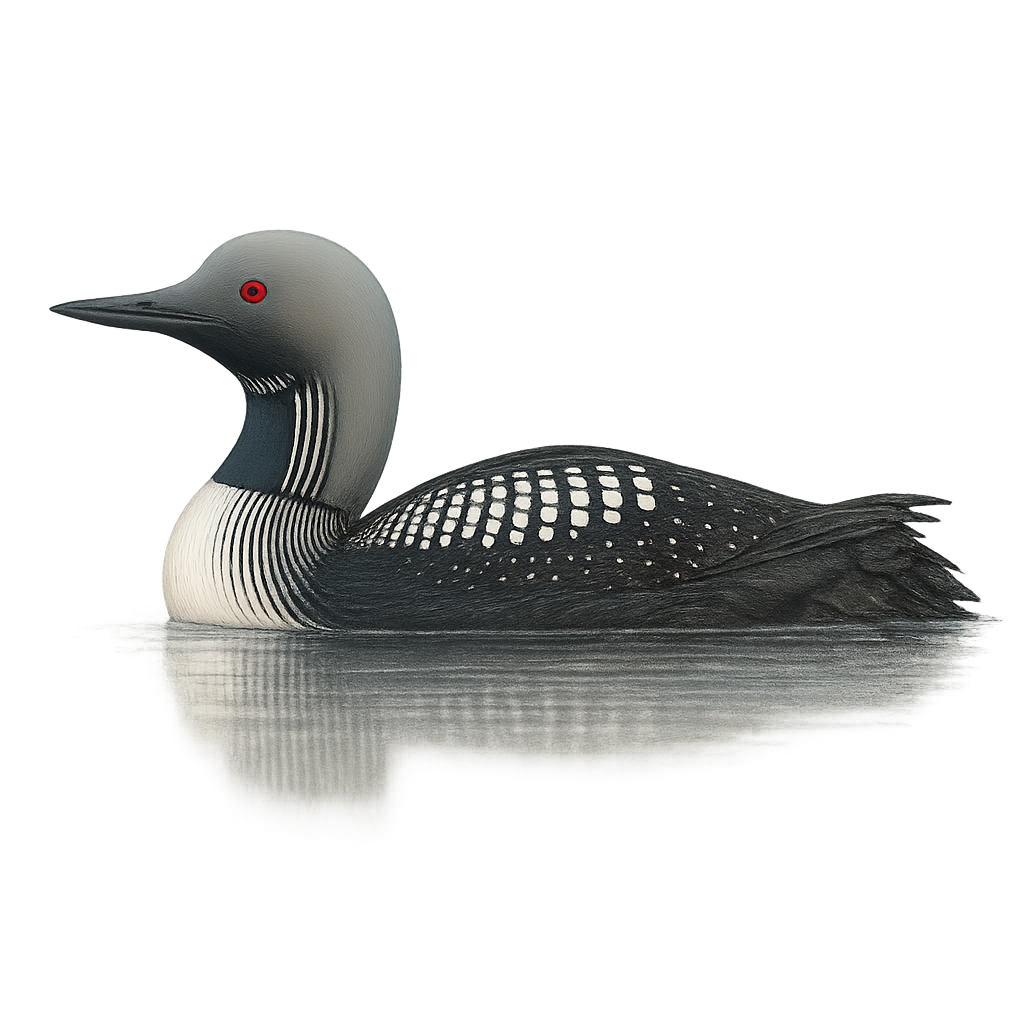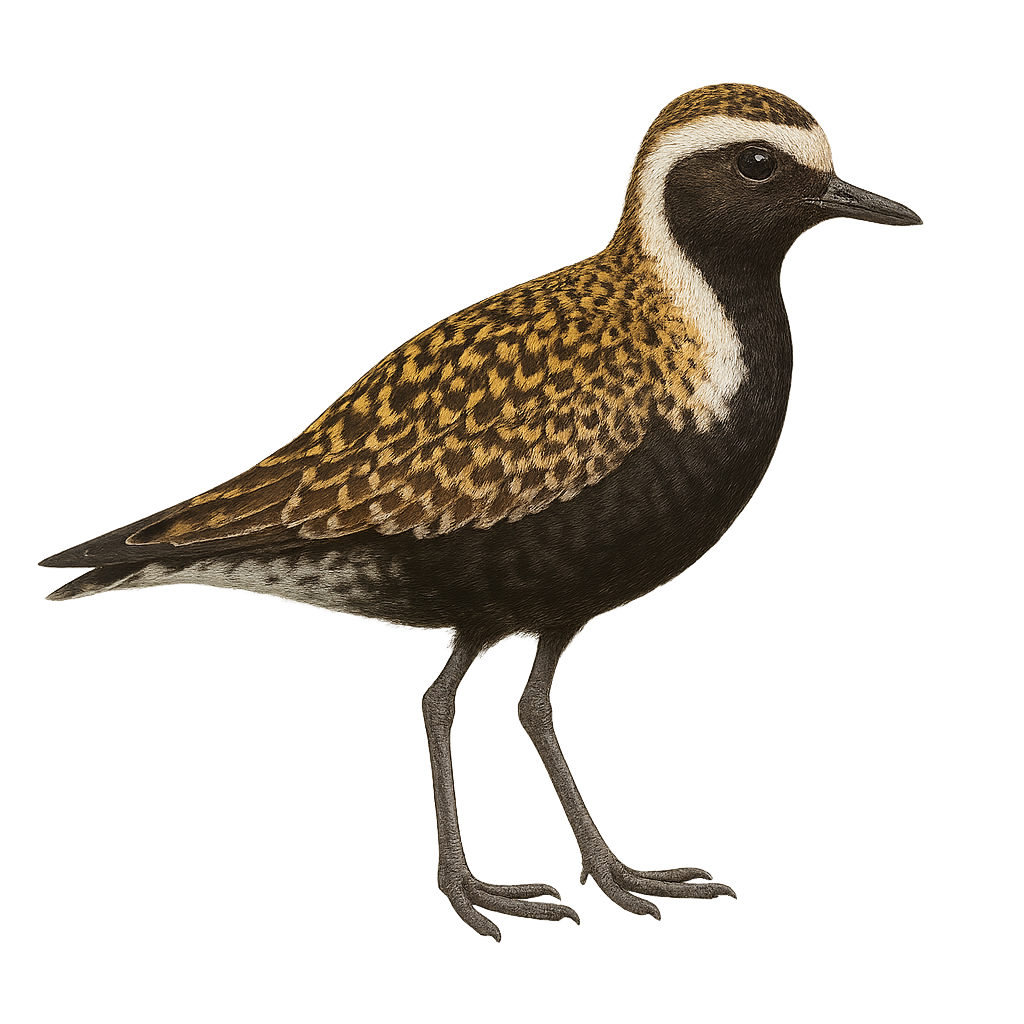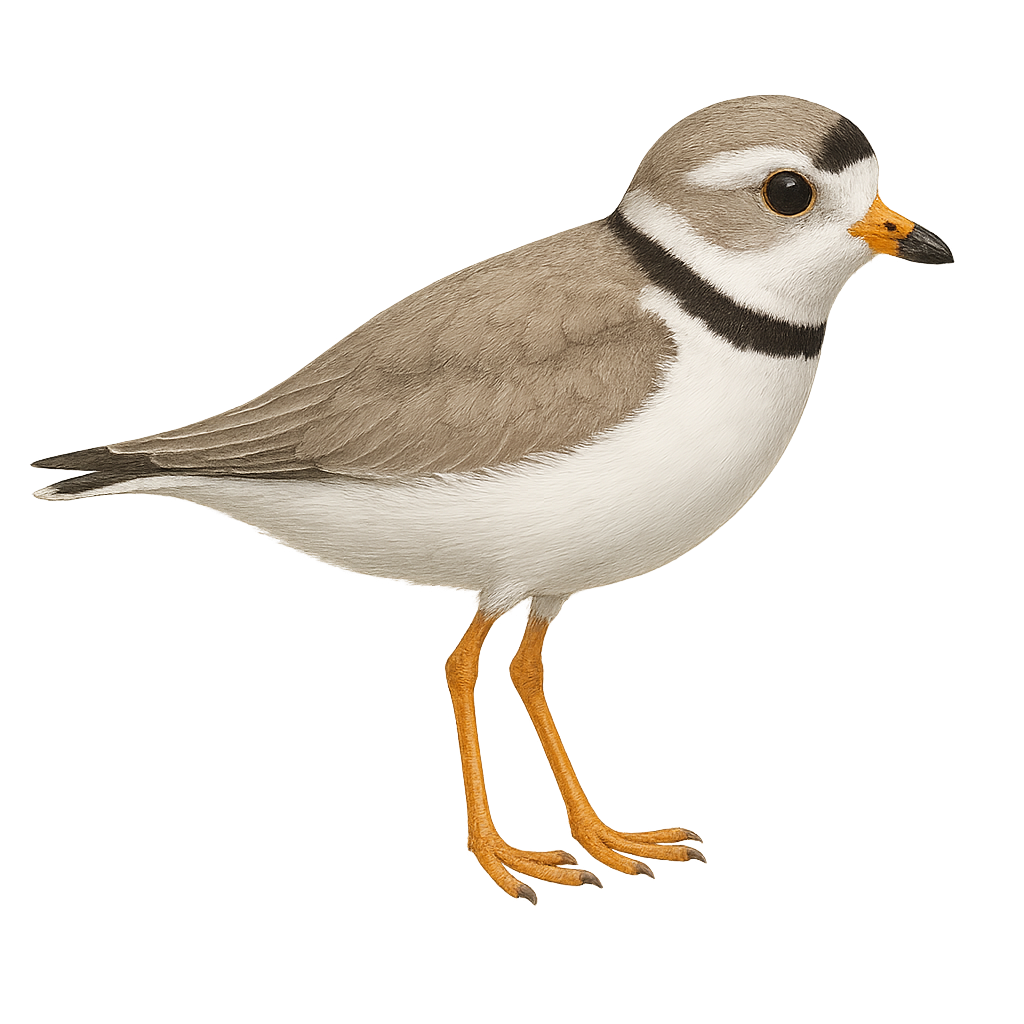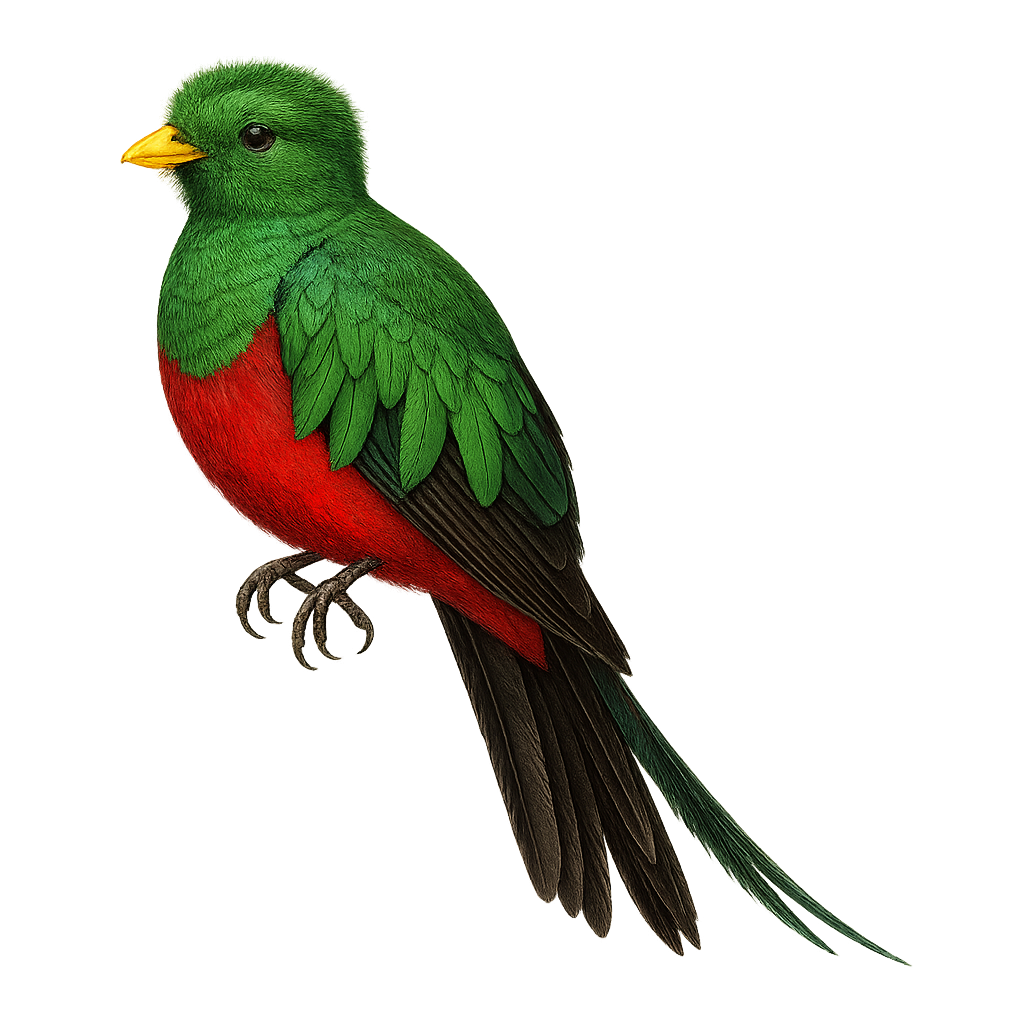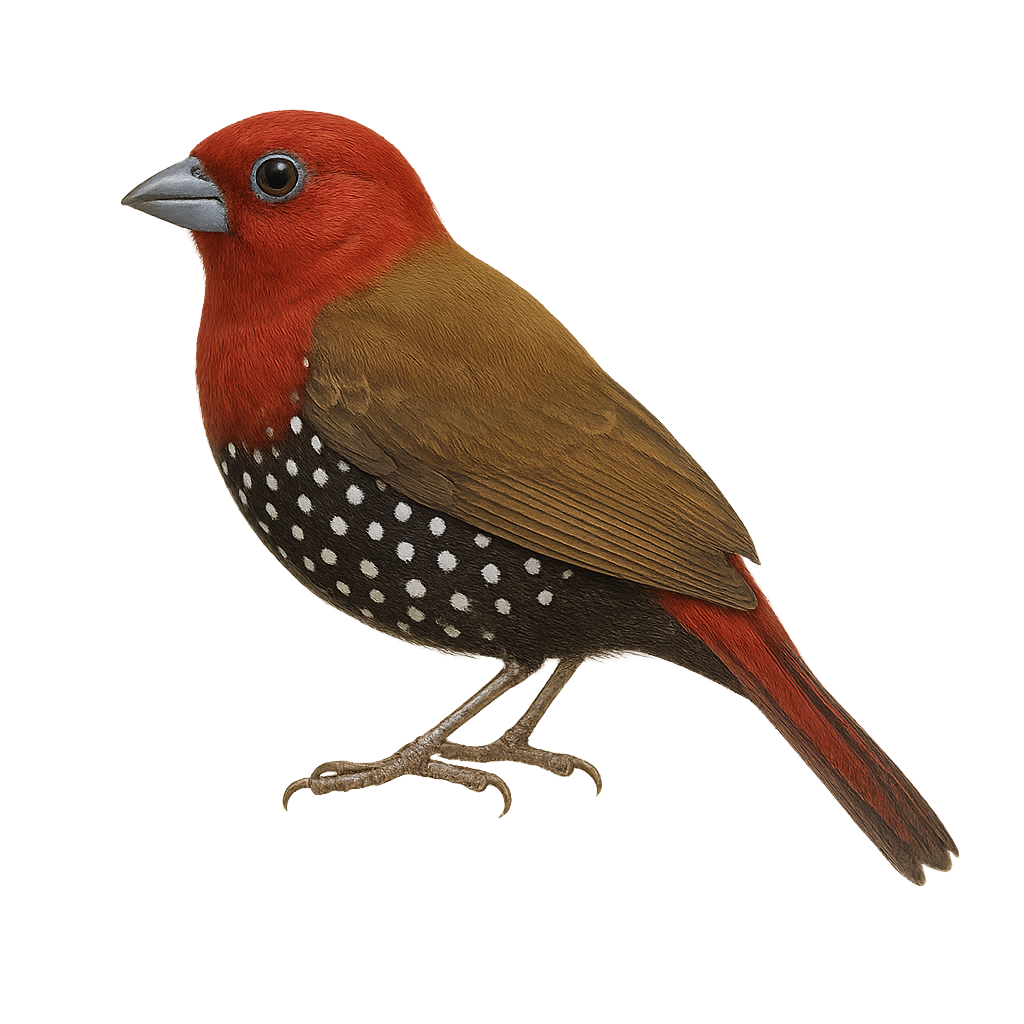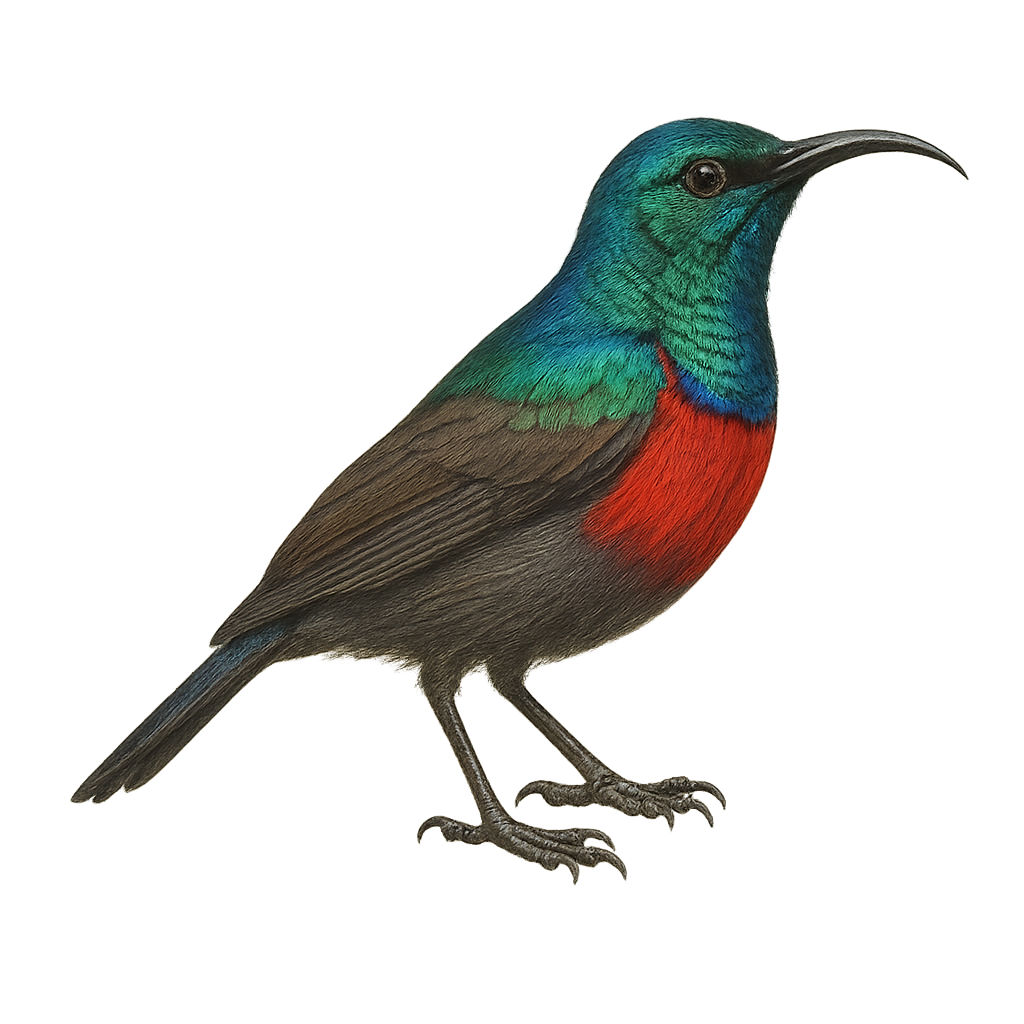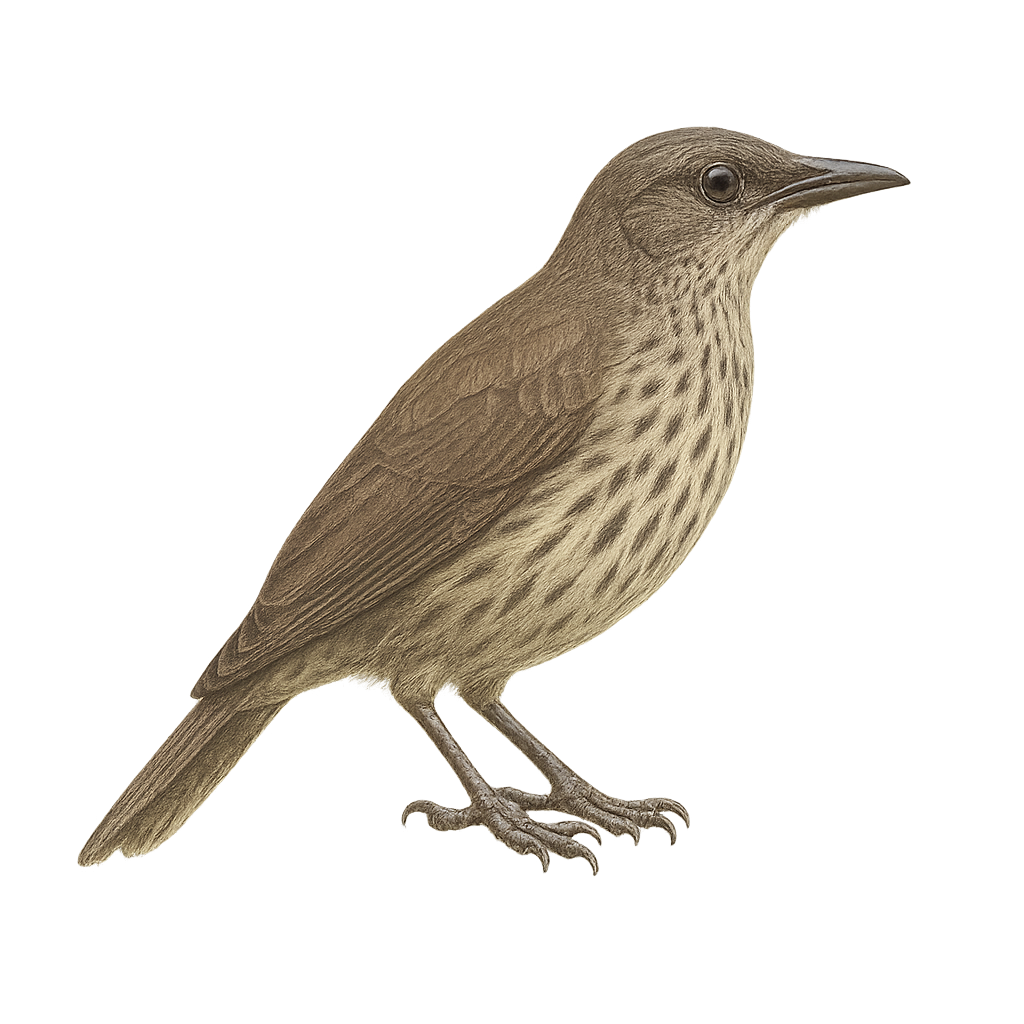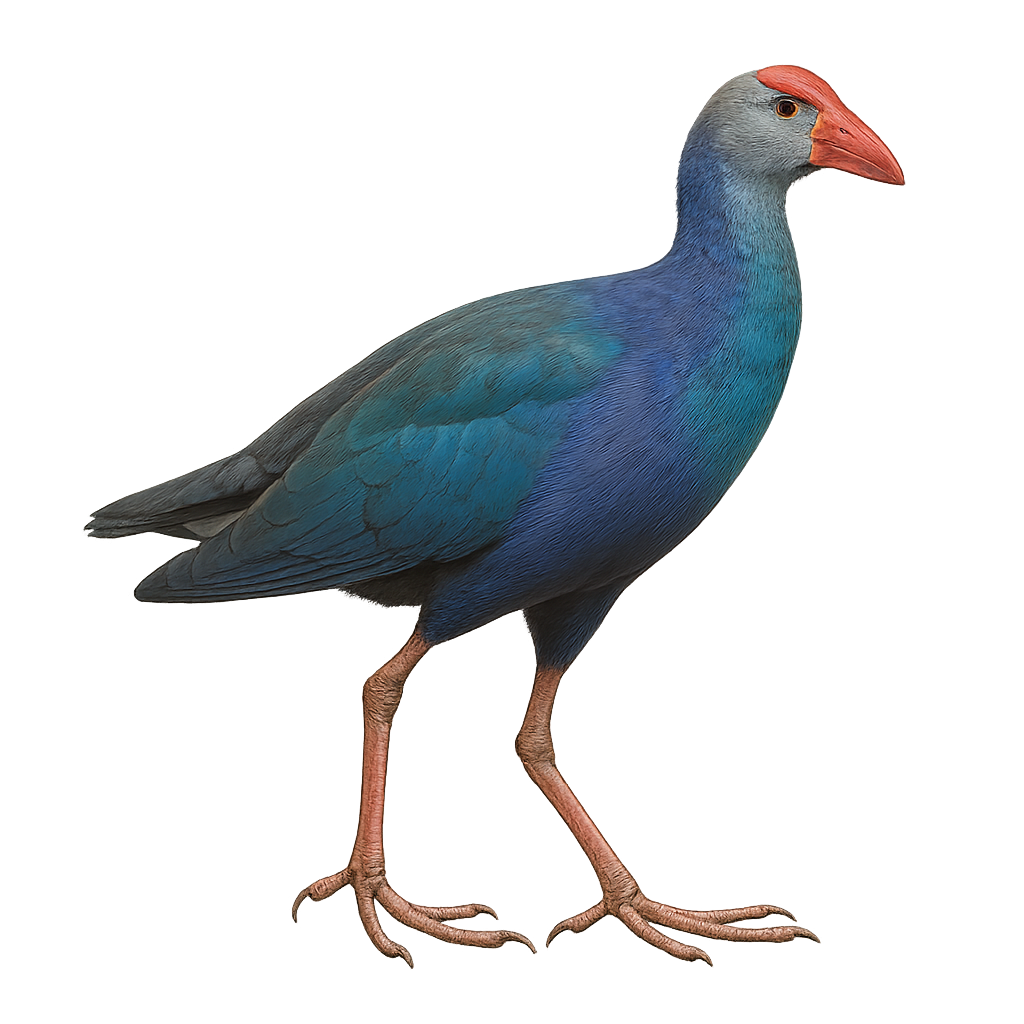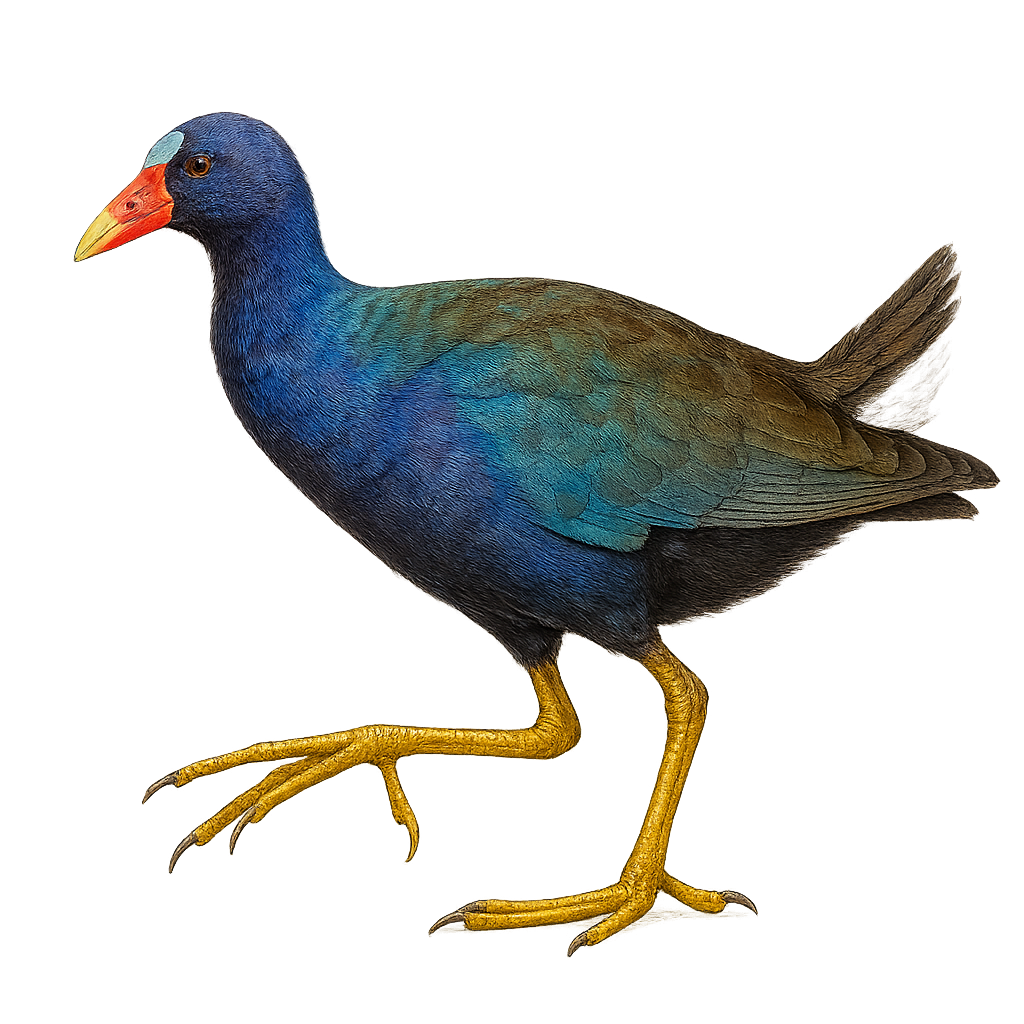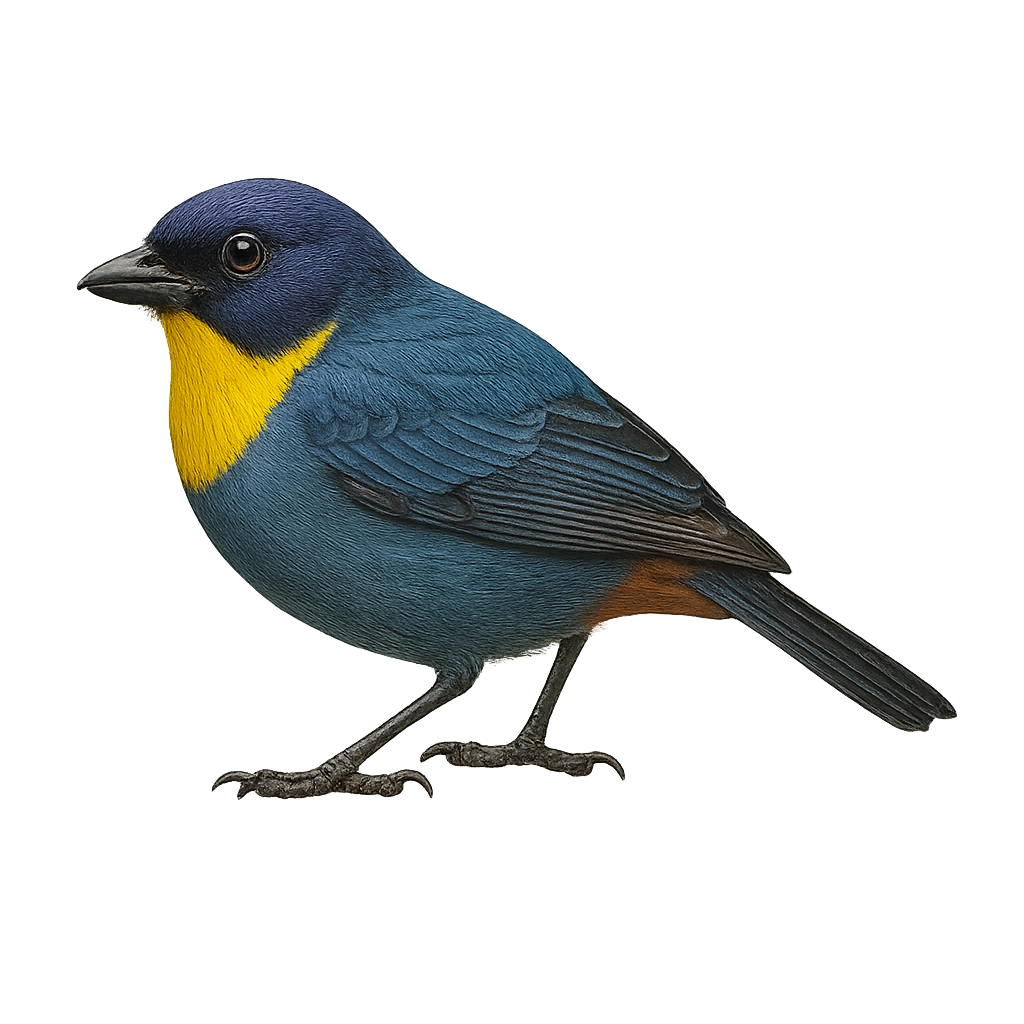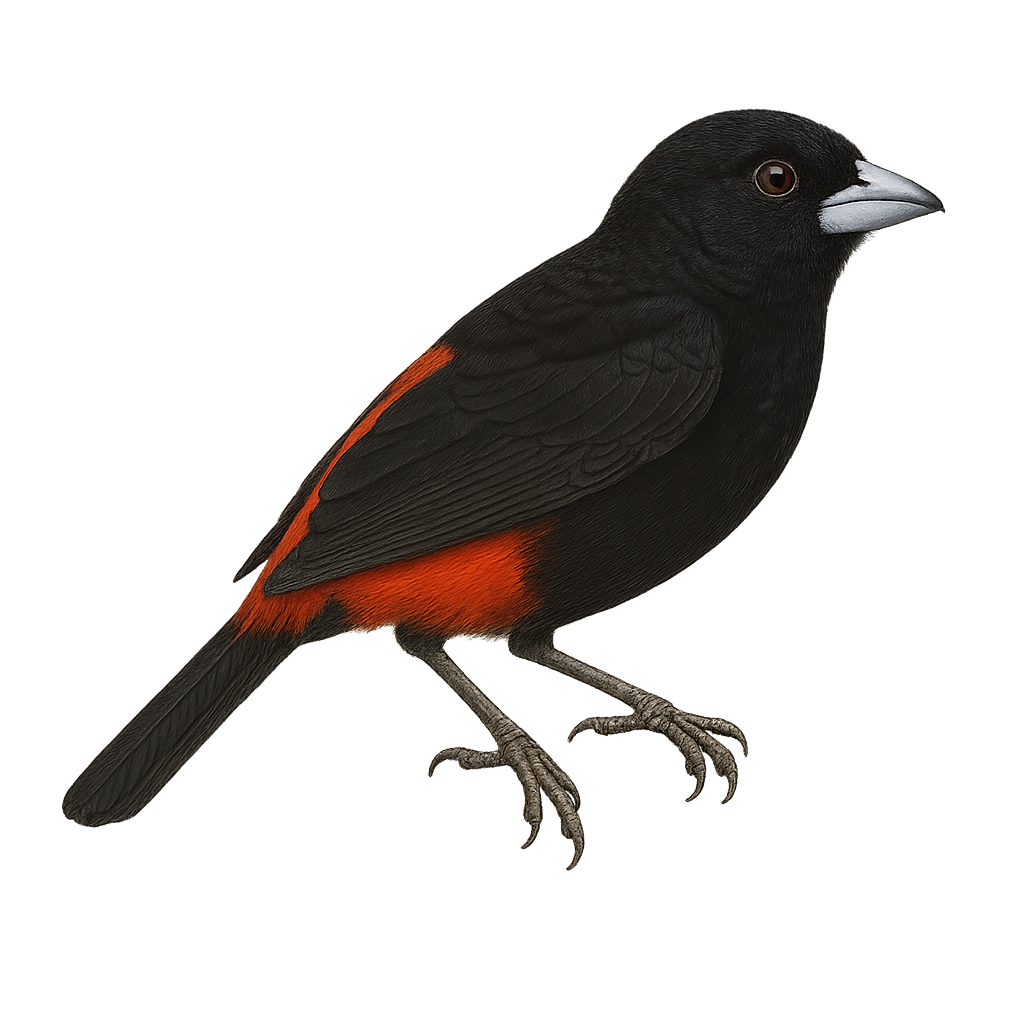The Pink-headed Warbler, or Cardellina versicolor, is a small songbird with distinctive plumage, primarily bright red on the face and throat, contrasting with a gray and white body. It primarily inhabits the coniferous and mixed forests of the southwestern United States and Mexico. This bird is often seen foraging for insects in dense foliage. Although its habitat is relatively stable, the Pink-headed Warbler is sensitive to environmental changes, particularly deforestation. Its breeding season coincides with the abundance of insects, ensuring sufficient food for its young. Ornithologists particularly appreciate its melodious song and liveliness.
The Pine Warbler (Setophaga pinus) is a small songbird belonging to the Parulidae family, commonly found in pine forests across North America. It measures about 14 cm in length and weighs between 9 and 15 grams. Its plumage is primarily olive-green with yellowish tones on the chest and belly, and its wings feature two distinct white bars. Males and females are similar, though males are often more vibrant. The Pine Warbler is known for its melodious and repetitive song, often heard before it is seen. It primarily feeds on insects but also consumes seeds and berries, especially in winter.
The Prairie Warbler, Setophaga discolor, is a small songbird belonging to the Parulidae family. It is easily identified by its bright orange throat, olive-green back, and distinctive black streaks on its flanks. Males display more vibrant colors than females, especially during the breeding season. This passerine primarily inhabits open woodlands, scrublands, and wetlands in the southeastern United States. A migratory bird, it winters in the Caribbean and Central America. Its song is a soft, melodious trill, often heard in spring. The Prairie Warbler feeds mainly on insects and small spiders, which it catches by flitting agilely among branches.
The Prothonotary Warbler, or Protonotaria citrea, is a small songbird in the Parulidae family, easily recognizable by its bright yellow plumage and orange head. It primarily inhabits the humid forests and swamps of eastern North America. A migratory bird, it winters in Central America and northern South America. It feeds mainly on insects and spiders, which it captures in dense foliage. The Prothonotary Warbler is known for its melodious song and elaborate courtship displays. Although its population is stable, it is threatened by habitat loss due to urbanization and wetland drainage.
The Painted Bunting is a small bird known for its vibrant plumage, primarily inhabiting the southern United States and parts of Mexico. Males display bright colors with a blue head, green back, and red belly, while females and juveniles are more subdued in olive green. These birds prefer habitats such as open woodlands, thickets, and shrub areas. They are often seen feeding on seeds and insects. Although they are relatively not very shy, they can be challenging to spot due to their discreet behavior and preference for dense habitats. Their melodious song is often the first clue to their presence.
The Pink-backed Pelican, or Pelecanus rufescens, is a medium-sized waterbird known for its greyish plumage and slightly pinkish back. It has a long bill with a distinctive gular pouch used for catching fish. Its wings are broad and powerful, suited for gliding flight. Found mainly in sub-Saharan Africa, it inhabits lakes, rivers, and marshes. Sociable by nature, it often lives in colonies. Its breeding season varies by region, typically nesting in trees or on islets. Its diet consists mainly of fish, which it often hunts in groups.
The Peruvian Pelican, or Pelecanus thagus, is a large aquatic bird known for its long bill and distinctive throat pouch. It has predominantly grey plumage with white hues on the head and neck. This bird is often seen along the Pacific coasts from Ecuador to southern Chile. It primarily feeds on fish, which it catches through spectacular dives. During the breeding season, it forms colonies on coastal islands, where it builds rudimentary nests. Although its population is stable, it is sensitive to human disturbances and marine pollution.
The Pesquet's Parrot, also known as the vulturine parrot, is a unique species native to the rainforests of New Guinea. It is easily recognizable by its striking black and red plumage and its bald head, an adaptation for feeding on fruits without soiling its feathers. This parrot is primarily frugivorous, feeding on figs and other fruits. Its natural habitat includes lowland and montane forests, where it lives in small groups or pairs. Despite its impressive appearance, the Pesquet's Parrot is relatively discreet and difficult to spot in the wild. Its population is declining due to deforestation and illegal trade.
The Red-necked Phalarope is a small wader bird primarily found in marshes, salt lakes, and estuaries in North America, Europe, and Asia. It measures about 20 cm in length and weighs between 30 and 50 g. What distinguishes it is its brightly colored plumage, with red and gray tones, and its fine, pointed bill, which allows it to capture insects and small crustaceans from the water. The Red-necked Phalarope is an excellent swimmer and spends much of its time spinning on the water to capture its food. While its population is not currently in danger, it is vulnerable to habitat loss, pollution, and human disturbance, especially during the breeding season.
The Phainopepla is an elegant and distinctive bird, easily recognizable by its glossy black plumage in males and gray in females, with striking red eyes. This bird measures about 18 to 20 cm in length and has a long, slender tail. It is primarily found in the arid and semi-arid regions of the southwestern United States and Mexico. The Phainopepla feeds mainly on fruits, especially mistletoe, but also consumes insects. Its song is a soft whistle, often heard during the breeding season. It is known for its acrobatic flights and territorial behavior during nesting.
The Pale-crested Woodpecker, scientifically known as Celeus lugubris, is a medium-sized bird belonging to the Picidae family. It is easily identifiable by its distinctive pale crest and reddish-brown plumage. This woodpecker is primarily found in the tropical and subtropical forests of South America, particularly in Brazil, Bolivia, and Paraguay. It feeds mainly on insects, which it extracts by drumming on tree trunks with its strong beak. The Pale-crested Woodpecker is a diurnal bird, active mainly during the day. Although it is relatively not very shy, it remains cautious and prefers dense wooded areas where it can easily hide. Its population is currently stable, but it could be threatened by deforestation.
The Pompadour Green Pigeon, Treron pompadora, is a medium-sized bird belonging to the Columbidae family. It is primarily found in the tropical rainforests of South Asia, notably in India and Sri Lanka. This bird is distinguished by its bright green plumage, with shades of yellow and gray, and distinctive wing markings. Males and females exhibit slight sexual dimorphism, with males having brighter colors. The Pompadour Green Pigeon is frugivorous, feeding mainly on fruits and berries. It plays a crucial role in seed dispersal, thus contributing to forest regeneration. Although generally discreet, it can be observed in small groups, especially during the breeding season.
The Pink Pigeon, or Nesoenas mayeri, is an endemic species of Mauritius, known for its distinctive pale pink plumage and red-ringed eyes. Measuring about 36 cm in length, this bird features a reddish beak and pink legs. Once critically endangered, the Pink Pigeon has seen its population increase due to intensive conservation efforts. It primarily inhabits the island's native forests, feeding on fruits, seeds, and flowers. Although its population is rising, it remains vulnerable due to habitat loss and predation by introduced species. Captive breeding and reintroduction programs have been crucial for its survival.
The Pacific Loon, or Gavia pacifica, is an elegant and graceful aquatic bird often seen in coastal waters and lakes of northern America. Its plumage is primarily silvery gray with a white belly, and it features a black head and neck with a distinctive white band. During the breeding season, it migrates to Arctic regions to nest. This bird is an excellent diver, capable of staying underwater for several minutes to hunt fish and crustaceans. Its melodious and plaintive call is often heard at dusk, adding a mystical ambiance to northern landscapes. Although generally solitary, it can be seen in small groups during migrations.
The Pacific Golden Plover, or Pluvialis fulva, is a medium-sized migratory bird belonging to the Charadriidae family. It is known for its striking golden and black plumage during the breeding season, which becomes duller outside this period, aiding in camouflage in open habitats. This bird is primarily found in coastal areas, grasslands, and marshes. A long-distance migrant, it travels thousands of kilometers between its breeding grounds in Siberia and its wintering areas in Oceania and Southeast Asia. Its diet mainly consists of insects, crustaceans, and small invertebrates.
The Piping Plover, Charadrius melodus, is a small coastal bird with pale plumage, primarily white and gray, featuring bright orange legs and a short black bill. Known for its melodious call, it nests on sandy beaches and dunes. This plover is often found along the Atlantic coast and the Great Lakes in North America. Unfortunately, it is threatened by habitat loss and human disturbances, leading to conservation efforts to protect its nesting sites. Adults measure about 17 to 18 cm in length with a wingspan of 35 to 41 cm. Their diet mainly consists of insects and small crustaceans.
The Peale's Fruit Dove is a medium-sized bird, measuring about 20 cm in length. It features a vibrant plumage with a green head and neck, a bright yellow belly, and wings with shades of green and blue. Males and females are similar, although males may have slightly brighter colors. This bird is endemic to the South Pacific islands, particularly in Samoa and Tonga. It prefers dense tropical forests where it primarily feeds on fruits. Its call is soft and melodious, often heard at dawn and dusk. Although generally solitary, it can be seen in small groups during the breeding season.
The Pavonine Quetzal, or Pharomachrus pavoninus, is a stunning bird found in the tropical forests of South America. With its emerald green and vivid red plumage, it is admired for its beauty and grace. This bird measures about 36 to 40 cm in length, with a tail that can reach up to 60 cm in males. It primarily feeds on fruits, but also consumes insects and small vertebrates. The Pavonine Quetzal is often seen in humid forests, preferring altitudes between 500 and 2000 meters. Although its habitat is threatened by deforestation, it is currently listed as Least Concern by the IUCN.
The Pallas's Rosefinch, scientifically known as Carpodacus roseus, is a small bird with striking plumage, predominantly bright pink in males and duller in females. It belongs to the Fringillidae family and is mainly found in the coniferous forests and shrublands of Northeast Asia. Its conical beak is well-suited for its granivorous diet, although it also consumes insects during summer. The Pallas's Rosefinch is a migratory bird, moving southward in winter. It is admired for its melodious song and vibrant colors, making it a favorite subject for birdwatchers and photographers. Although its conservation status is currently of least concern, habitat destruction could pose future threats.
The Pink-throated Twinspot is a small bird with distinctive plumage, primarily brown with characteristic white spots on its flanks. The male has a pink throat, while the female displays more subdued colors. This bird is endemic to East Africa, where it inhabits savannas, open forests, and shrublands. It feeds mainly on seeds but also consumes insects. Its song is soft and melodious, often heard at dawn and dusk. Although discreet, it is sometimes observed in small groups, especially outside the breeding season. The species is currently considered of least concern by the IUCN but is sensitive to habitat degradation.
The pygmy nuthatch (Sitta pygmaea) is a small forest passerine, measuring 9–11 cm in length and weighing 8–12 g, identified by its slate-blue dorsal plumage, brighter blue crown, and contrasting white throat. Endemic to western North America’s ponderosa and Jeffrey pine forests, it forages for insects, seeds, and resin in bark crevices. Highly social, it forms stable family groups year-round and often clings upside-down on trunks and branches. The breeding season runs from 01.04–30.06; it nests in cavities, laying 5–9 eggs incubated for 14–17 days, with hatchlings emerging between 15.04 and 17.07.
The Plain Xenops is a small bird from the Furnariidae family, primarily found in the tropical forests of Central and South America. It measures about 12 cm in length and is characterized by its brown plumage with lighter shades on the belly. Its slightly curved beak allows it to probe tree bark for insects, its main food source. This bird is often seen climbing tree trunks, much like woodpeckers. Although discreet, its high-pitched, repetitive song can be heard through the dense canopy. The Plain Xenops plays an important role in the ecosystem by helping control insect populations.
The Purple Sunbird, or Cinnyris asiaticus, is a small bird found mainly in South Asia. Known for its vibrant plumage, especially in males, it displays metallic colors ranging from blue to violet. The female, on the other hand, has more subdued tones, with an olive-brown plumage. These birds are often seen in gardens, open forests, and urban areas, where they primarily feed on nectar, but also insects. Their slender, curved beak is perfectly adapted for extracting nectar from flowers. The Purple Sunbird is a very active bird, often seen flitting from flower to flower, playing a crucial role in plant pollination.
The Preuss's Sunbird is a small, brightly colored bird primarily found in the humid tropical forests of Central Africa. It is recognizable by its vibrant plumage, with metallic green and blue hues on its back and head, and a bright red chest. Males and females exhibit marked sexual dimorphism, with females having duller colors. This nectarivore primarily feeds on nectar but also consumes insects to supplement its diet. It plays a crucial role in the pollination of tropical plants. The Preuss's Sunbird is an active and agile bird, often seen darting quickly from flower to flower.
The Polynesian Starling, or Aplonis tabuensis, is a medium-sized bird belonging to the Sturnidae family. It is primarily found in the islands of Polynesia, where it inhabits tropical forests, mangroves, and wooded areas. This bird is distinguished by its dark, glossy plumage, often black with metallic sheens. Known for its adaptability, it thrives even in disturbed habitats. The Polynesian Starling is a sociable bird, often seen in small groups. Its diet is varied, including fruits, insects, and sometimes small vertebrates. Although its conservation status is currently "least concern," monitoring its populations is essential due to potential threats such as deforestation and invasive species.
The Pale-breasted Spinetail is a small bird from the Furnariidae family, primarily found in South America. It is characterized by its reddish-brown plumage and lighter, almost white breast. This bird is often seen in dense undergrowth and secondary forests, where it moves nimbly in search of food. It primarily feeds on insects and small invertebrates, which it finds by foraging through foliage and low branches. The Pale-breasted Spinetail is known for its distinctive song, a series of rapid, repetitive trills that echo through its habitat. Although relatively common within its range, it remains elusive and difficult to spot due to its wary behavior and preference for densely vegetated areas.
The Purple Swamphen, or Porphyrio porphyrio, is a striking waterbird known for its vivid blue-purple plumage and bright red bill. It primarily inhabits marshes, lakes, and wetlands with dense vegetation. This bird is recognized for its graceful walk and swimming ability. The Purple Swamphen is omnivorous, feeding on aquatic plants, insects, and small animals. It is often seen walking on water lilies thanks to its long toes. Although generally discreet, it can be noisy, emitting loud and varied calls. Its presence is an indicator of healthy aquatic ecosystems.
The Purple Gallinule, or Porphyrio martinica, is a striking waterbird known for its vivid colors. It features a bright blue-purple plumage, a red bill with a yellow tip, and long yellow legs. This species is primarily found in marshes, ponds, and wetlands of Central and South America, as well as the southern United States. It is known for its ability to walk on floating vegetation due to its long toes. The Purple Gallinule is a social bird, often seen in small groups. It feeds mainly on aquatic plants, insects, and small invertebrates. Its breeding period varies by region but is generally active during the warmer months.
The Purplish-mantled Tanager, scientifically known as Iridosornis porphyrocephalus, is a vibrant bird belonging to the Thraupidae family. It inhabits the humid forests of the Andes, where its striking plumage stands out. The bird's head is a distinctive purplish hue, contrasting with a body of blue and green shades. It measures about 15 cm in length and weighs between 20 and 30 grams. Its diet consists mainly of insects and fruits found in the dense canopy. Although discreet, it is often detected by its melodious song. The Purplish-mantled Tanager is an important indicator of the health of Andean forest ecosystems, and its presence signifies a rich and preserved biodiversity.
The Passerini's Tanager, or Ramphocelus passerinii, is a colorful and fascinating bird found mainly in Central America, particularly in Costa Rica and Panama. This bird features a glossy black plumage with a bright red back, making it easily recognizable. Males and females show slight differences in coloration, with females having duller shades. They typically inhabit tropical rainforests, forest edges, and plantations, where they primarily feed on fruits and insects. Their song is soft and melodious, often heard at dawn. Although they are relatively tolerant of human presence, they prefer habitats with dense vegetation.


